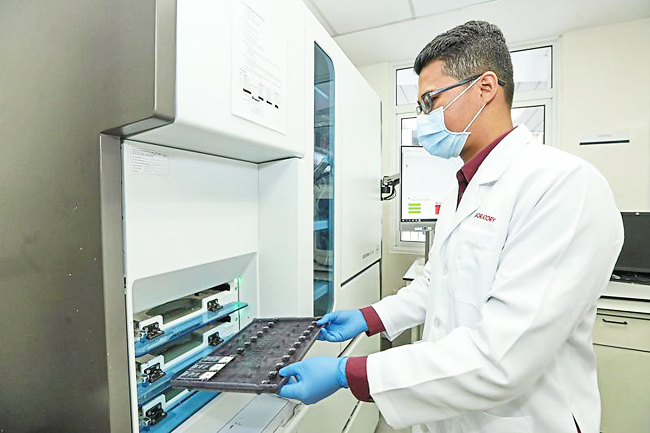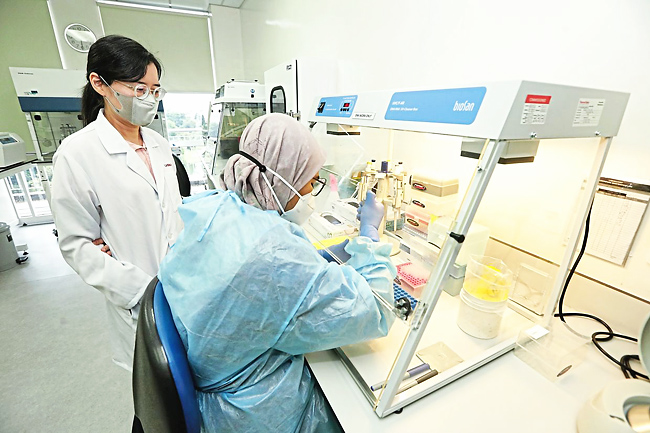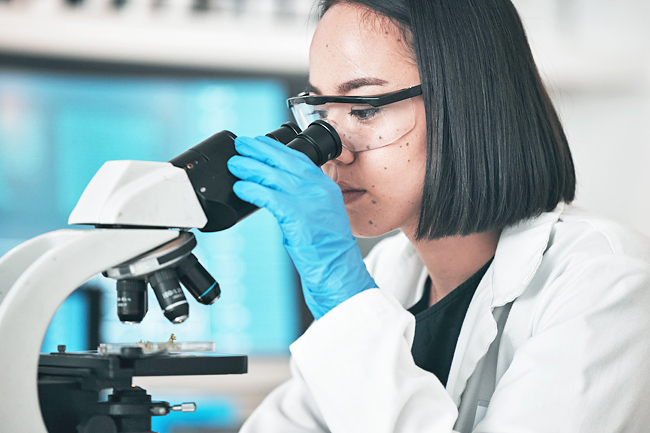ANN/THE STAR – Patients often don’t realise what happens behind the scenes after their blood or tissue samples are taken.
Medical laboratory scientists are the unsung heroes who analyse the samples and produce the test results and reports for doctors to interpret.
One such scientist is Mohammad Muslim Mohammad Effendi, 31, who specialises in histopathology.
“The histopathology lab receives specimens as organ and tissue samples, which we cut into very thin sections about three microns in size,” he said. For context, three microns is roughly the size of a speck of fine dust.
After such intricate precision work, the samples are stained to provide visibility to their details and viewed under a microscope to determine if their cells are abnormal or cancerous.
In addition, histopathologists are the ones in charge of preparing enough specimens from the patient’s sample for other sections of the lab to use as well.
According to Mohammad Muslim, his team will create multiple slides from one single tissue sample.



“We process the specimen into tissue blocks, and from this block, we are able to create multiple sample slides to perform all the different tests.
“This way, we don’t have to continuously collect tissue samples from the patient each time we perform a new test,” he said.
A TEAM EFFORT
Collaboration and teamwork are key throughout the lab and hospital, as every single person plays an important role, according to Dr Yap Ning Yi, 39. Sample collection begins with the lab phlebotomist who takes the patient’s blood or the surgeon in the operation theatre who biopsies (for example: takes a sample) a suspicious mass or growth in the patient.
“Beyond this, the samples go through different specialists and lab stations according to what is required.
“In a way, it’s like a fast-paced assembly line,” said the molecular diagnostics lab assistant manager.
For example, if more detailed information about a sample is needed, histopathologists will consult their colleagues from the molecular diagnostics lab, who will be able to extract the genetic material of the sample to be examined at a deeper level.
“We pre-treat the samples to ensure the specimen’s suitability for testing; there’s a whole flurry of steps from incubating to analysing – all of which could take up to several days to produce results,” she said.
The role of molecular diagnostics is particularly important for cancer as these scientists help to test the sensitivity of a patient’s malignant cells to various drugs.
“We look into the treatment’s effectiveness based on how much weaker or stronger it is against each specific mutation.”
The concept, Dr Yap said, is called targeted therapy, where cancers that have specific gene mutations are more vulnerable to certain drugs that can be used to “target” them. This will help the attending doctor decide on the best treatment for the patient.
“Before this, chemotherapy was often used for cancer despite the numerous side effects from targeting both cancerous and healthy cells, which is why molecular diagnostics and cytogenetic testing became increasingly important as more drugs and targeted therapies were discovered and approved for use,” she added.
Another responsibility medical lab scientists have is to check the quality control parameters for certain tests, especially molecular diagnostic tests, before they run the sample through it.
This is to ensure the reliability of the results before producing the report for the doctor.
“We work closely together with oncologists (cancer specialists) and haematologists (blood specialists) for validation.
“So, whenever we encounter borderline results, we verify them with an alternative test method, which may be from another section of the lab,” said Dr Yap.
This is especially common for certain cancers, which may require different tests from different lab sections, she said.
THE LAB MUST KEEP RUNNING
Throughout their years of experience in a fast-paced lab environment, Mohammad Muslim and Dr Yap have learnt to overcome all sorts of obstacles.
Mohammad Muslim shared that in the beginning, he felt the pressure of needing to succeed and to avoid making mistakes as they would impact result accuracy.
“You learn to get used to it, especially when you become more adept in your field and in handling all the different specimens and equipment – the more you train, the more natural it becomes,” he said. Dr Yap emphasised properly planning the day’s work is an important part of every medical lab scientist’s job, regardless of their specialisation.
“It’s crucial to complete all tests in a timely manner so that the results can be issued within the proposed turnaround time, especially for molecular diagnostic tests, which take a longer time to complete,” she said. She added that it is important to set and follow the appropriate guidelines to ensure that every task can be finished by the expected turnaround time, in order to mitigate stress.
Other challenges Mohammad Muslim has encountered in the histopathology lab revolve around ensuring the proper preparation, storage and care of patient samples.
He points out that there are proper methods for handling the samples from the moment they are taken from the patient’s body to when they are tested, in order to maintain the cells’ integrity. Should the cells be “broken” by the time the tests are conducted, the compromised, or spoilt, specimen would produce false positive results where healthy cells could be mistaken for cancerous ones.
“We always have back-up measures when producing specimens.
“For example, if we were to create specimens of the tip of a patient’s appendix, we would take half of the tip, and in the event the cells break or are underprocessed, we have the other half as something to fall back onto,” he said.
Similarly, Dr Yap said in the case of very small biopsy samples, there is a chance of having insufficient samples when conducting multiple tests, so having measures to mitigate this can be very handy.
As is normal when it comes to machinery and equipment, there may be unexpected breakdowns or other issues. Dr Yap said that while it is normal for machines to have regular maintenance, which can be planned for, the unexpected can also always occur. – Serafina Liew






